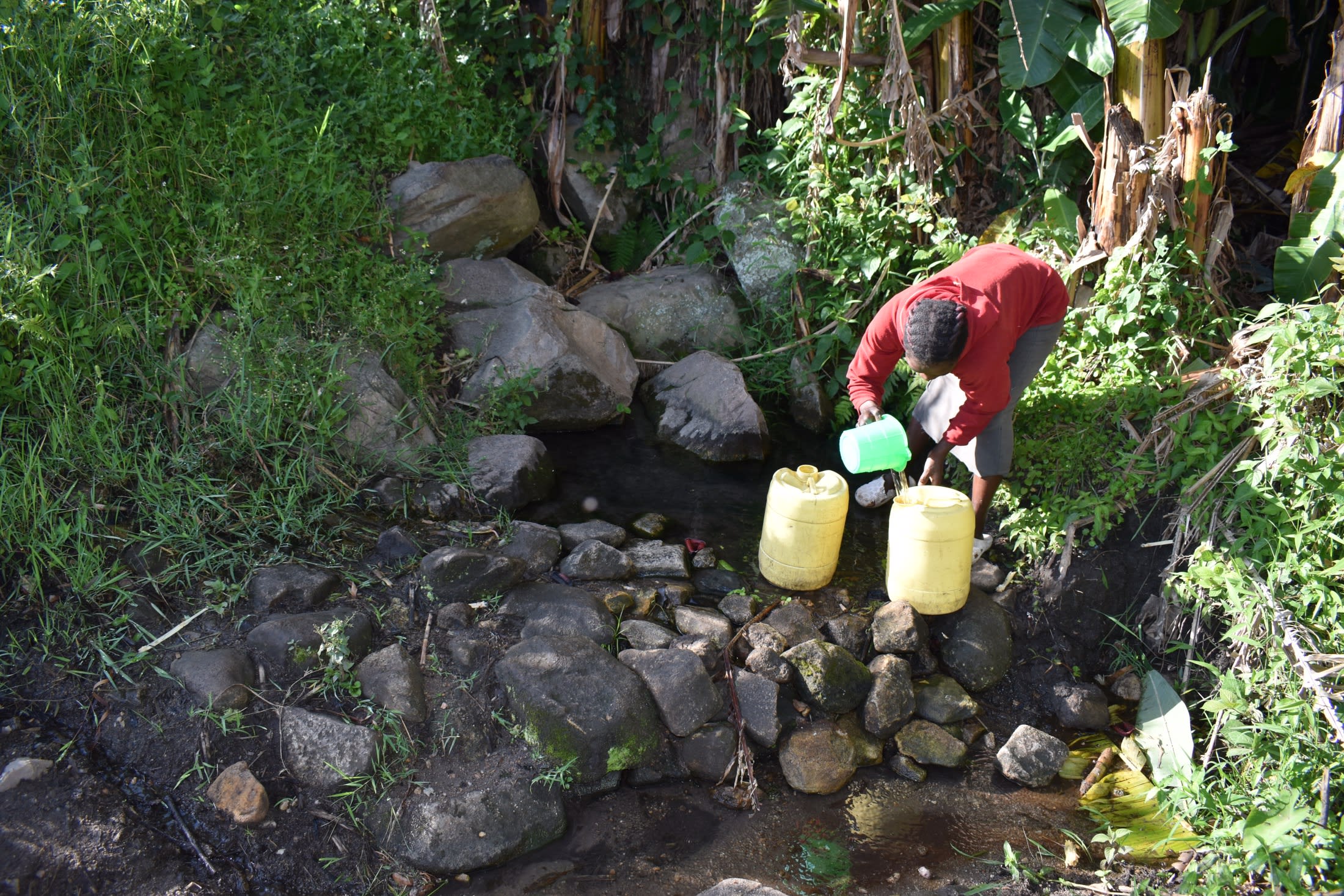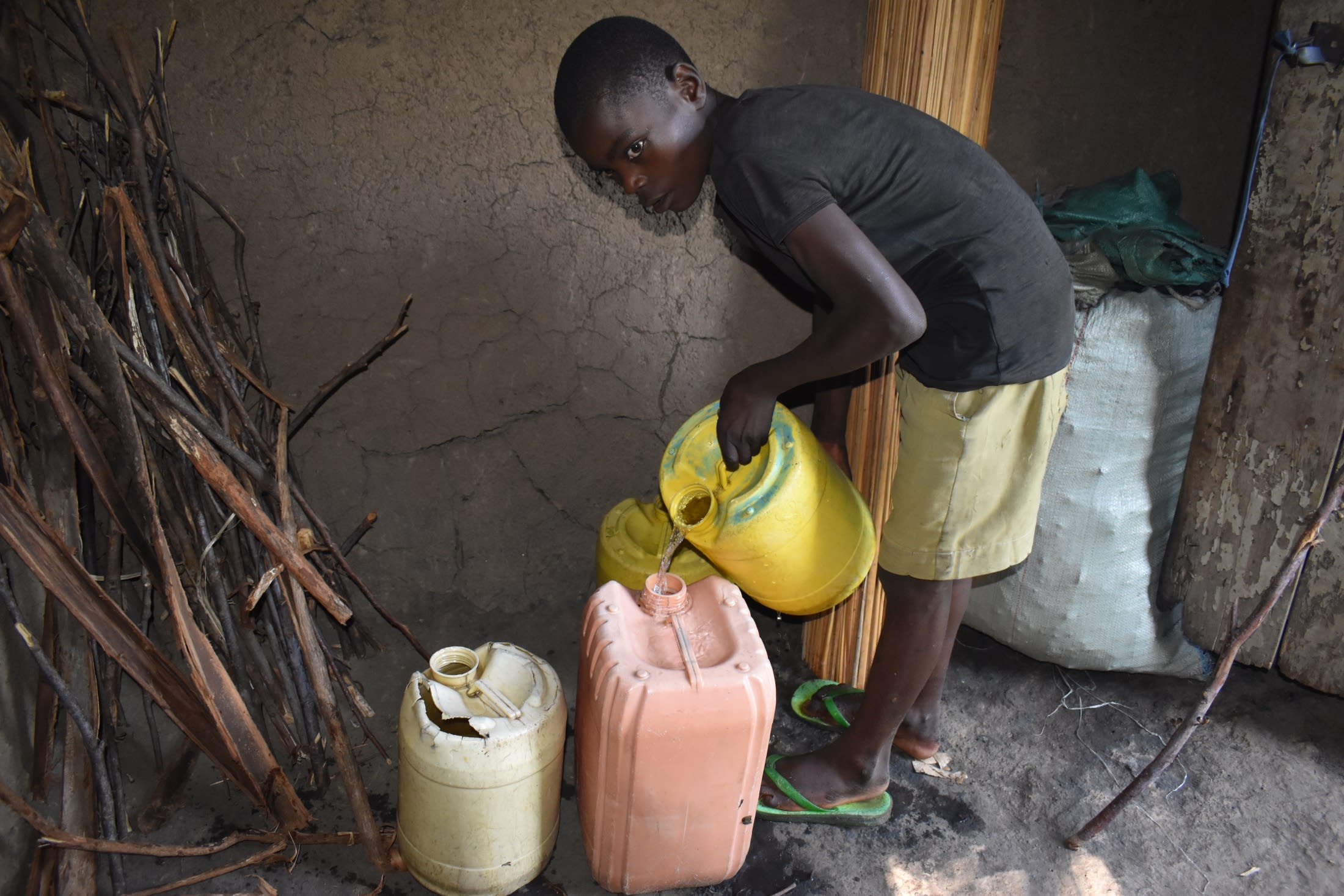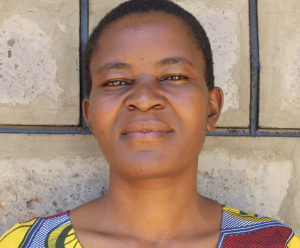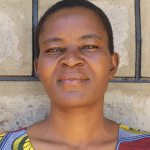The 210 community members of Mukhuyu rely on Andimi Spring for their daily water needs, but collecting sufficient water is a constant struggle.
To get water, community members must first traverse the rugged terrain surrounding the spring. It is bushy and rocky and often becomes wet and slippery, resulting in injuries.

"Fetching water is annoying because whenever I go [to] the spring and I fall and hurt myself, this has affected my school life," said 13-year-old Granting, shown below filling water storage containers.

Once community members reach the water, they must stand in a small collection area that is shallow and filled with leaves and other debris. The water must be scooped using a smaller container to fill their jugs before they hoist the heavy containers and climb back out of the treacherous area to carry them home.
The water they manage to collect is often contaminated, which means community members regularly suffer from reported water-related illnesses such as typhoid and diarrhea because they have no other alternative.

"I have been exposed to water-related health problems. I have been having complications with my stomach coming to discover, after the test, it was typhoid," said Karen Ogada, a 50-year-old farmer shown above. "[I] am not able to do other activities because [I] am sick and my children have been sent back home for school fees."
This community is eagerly awaiting the spring's protection so they can easily access the water, and hopefully restore their health and build better futures.
What We Can Do:
Spring Protection
Protecting the spring will help provide access to cleaner and safer water and reduce the time people have to spend to fetch it. Construction will keep surface runoff and other contaminants out of the water. With the community’s high involvement in the process, there should be a good sense of responsibility and ownership for the new clean water source.
Fetching water is a task predominantly carried out by women and young girls. Protecting the spring and offering training and support will, therefore, help empower the female members of the community by freeing up more of their time and energy to engage and invest in income-generating activities and their education.
Training on Health, Hygiene, COVID-19, and More
To hold trainings during the pandemic, we work closely with both community leaders and the local government to approve small groups to attend training. We ask community leaders to invite a select yet representative group of people to attend training who will then act as ambassadors to the rest of the community to share what they learn. We also communicate our expectations of physical distancing and wearing masks for all who choose to attend.
The training will focus on improved hygiene, health, and sanitation habits in this community. We will also have a dedicated session on COVID-19 symptoms, transmission routes, and prevention best practices.
With the community’s input, we will identify key leverage points where they can alter their practices at the personal, household, and community levels to affect change. This training will help to ensure participants have the knowledge they need about healthy practices and their importance to make the most of their water point as soon as water is flowing.
Our team of facilitators will use a variety of methods to train community members. Some of these methods include participatory hygiene and sanitation transformation, asset-based community development, group discussions, handouts, and demonstrations at the spring.
One of the most important issues we plan to cover is the handling, storage, and treatment of water. Having a clean water source will be extremely helpful, but it is useless if water gets contaminated by the time it is consumed. We and the community strongly believe that all of these components will work together to improve living standards here, which will help to unlock the potential for these community members to live better, healthier lives.
We will then conduct a small series of follow-up trainings before transitioning to our regularly scheduled support visits throughout the year.
Training will result in the formation of a water user committee, elected by their peers, that will oversee the operations and maintenance of the spring. The committee will enforce proper behavior around the spring and delegate tasks that will help preserve the site, such as building a fence and digging proper drainage channels. The fence will keep out destructive animals and unwanted waste, and the drainage will keep the area’s mosquito population at a minimum.

 Protected Spring
Protected Spring
 Rehabilitation Project
Rehabilitation Project



































